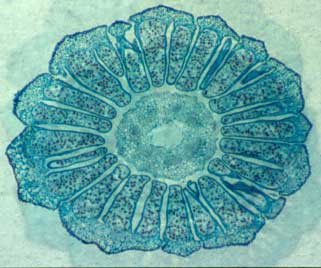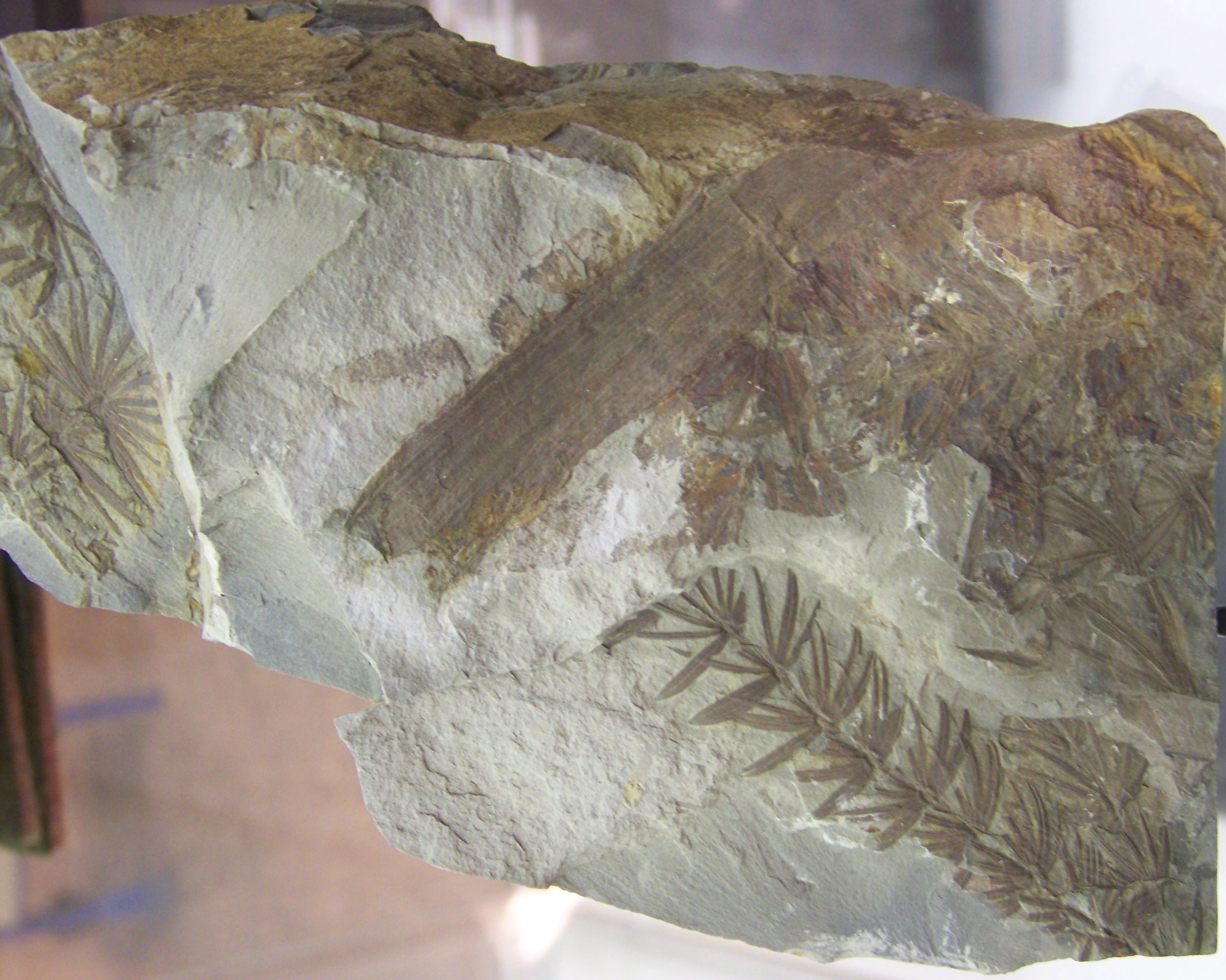|
Equisetales
Equisetales is an order of subclass Equisetidae with only one living family, Equisetaceae, containing the genus ''Equisetum'' (horsetails). Classification In the molecular phylogenetic classification of Smith et al. in 2006, Equisetales, in its present circumscription, was held to be the sole member of class Equisetopsida. The linear sequence of Christenhusz et al. (2011), intended for compatibility with the classification of Chase and Reveal (2009) which placed all land plants in Equisetopsida, made it the sole member of subclass Equisetidae, equivalent to Smith's Equisetopsida. The placement of Equisetales in subclass Equisetidae has subsequently been followed in the classifications of Christenhusz and Chase (2014) and PPG I (2016). The fossil record includes additional extinct species in Equisetaceae and the extinct families Calamitaceae, Archaeocalamitaceae and Phyllothecaceae The prehistoric family Phyllothecaceae, of the plant order Equisetales, was erected in 1828, ... [...More Info...] [...Related Items...] OR: [Wikipedia] [Google] [Baidu] |
Equisetales
Equisetales is an order of subclass Equisetidae with only one living family, Equisetaceae, containing the genus ''Equisetum'' (horsetails). Classification In the molecular phylogenetic classification of Smith et al. in 2006, Equisetales, in its present circumscription, was held to be the sole member of class Equisetopsida. The linear sequence of Christenhusz et al. (2011), intended for compatibility with the classification of Chase and Reveal (2009) which placed all land plants in Equisetopsida, made it the sole member of subclass Equisetidae, equivalent to Smith's Equisetopsida. The placement of Equisetales in subclass Equisetidae has subsequently been followed in the classifications of Christenhusz and Chase (2014) and PPG I (2016). The fossil record includes additional extinct species in Equisetaceae and the extinct families Calamitaceae, Archaeocalamitaceae and Phyllothecaceae The prehistoric family Phyllothecaceae, of the plant order Equisetales, was erected in 1828, ... [...More Info...] [...Related Items...] OR: [Wikipedia] [Google] [Baidu] |
Equisetidae
Equisetidae is one of the four subclasses of Polypodiopsida (ferns), a group of vascular plants with a fossil record going back to the Devonian. They are commonly known as horsetails. They typically grow in wet areas, with whorls of needle-like branches radiating at regular intervals from a single vertical stem. The Equisetidae were formerly regarded as a separate division of spore plants and called Equisetophyta, Arthrophyta, Calamophyta or Sphenophyta. When treated as a class, the names Equisetopsida s.s. and Sphenopsida have also been used. They are now recognized as rather close relatives of the ferns (Polypodiopsida) of which they form a specialized lineage. However, the division between the horsetails and the other ferns is so ancient that many botanists, especially paleobotanists, still regard this group as fundamentally separate at the higher level. Description The horsetails comprise photosynthesising, "segmented", hollow stems, sometimes filled with pith. At the jun ... [...More Info...] [...Related Items...] OR: [Wikipedia] [Google] [Baidu] |
Fern Orders
A fern (Polypodiopsida or Polypodiophyta ) is a member of a group of vascular plants (plants with xylem and phloem) that reproduce via spores and have neither seeds nor flowers. The polypodiophytes include all living pteridophytes except the lycopods, and differ from mosses and other bryophytes by being vascular, i.e., having specialized tissues that conduct water and nutrients and in having life cycles in which the branched sporophyte is the dominant phase. Ferns have complex leaves called megaphylls, that are more complex than the microphylls of clubmosses. Most ferns are leptosporangiate ferns. They produce coiled fiddleheads that uncoil and expand into fronds. The group includes about 10,560 known extant species. Ferns are defined here in the broad sense, being all of the Polypodiopsida, comprising both the leptosporangiate (Polypodiidae) and eusporangiate ferns, the latter group including horsetails, whisk ferns, marattioid ferns, and ophioglossoid ferns. Ferns first ... [...More Info...] [...Related Items...] OR: [Wikipedia] [Google] [Baidu] |
Equisetopsida
Equisetidae is one of the four subclasses of Polypodiopsida (ferns), a group of vascular plants with a fossil record going back to the Devonian. They are commonly known as horsetails. They typically grow in wet areas, with whorls of needle-like branches radiating at regular intervals from a single vertical stem. The Equisetidae were formerly regarded as a separate division of spore plants and called Equisetophyta, Arthrophyta, Calamophyta or Sphenophyta. When treated as a class, the names Equisetopsida s.s. and Sphenopsida have also been used. They are now recognized as rather close relatives of the ferns (Polypodiopsida) of which they form a specialized lineage. However, the division between the horsetails and the other ferns is so ancient that many botanists, especially paleobotanists, still regard this group as fundamentally separate at the higher level. Description The horsetails comprise photosynthesising, "segmented", hollow stems, sometimes filled with pith. At the jun ... [...More Info...] [...Related Items...] OR: [Wikipedia] [Google] [Baidu] |
Equisetaceae
Equisetaceae, sometimes called the horsetail family, is the only extant family of the order Equisetales, with one surviving genus, ''Equisetum'', which comprises about twenty species. Evolution and systematics Equisetaceae is the only surviving family of the Equisetales, a group with many fossils of large tree-like plants that possessed ribbed stems similar to modern horsetails. '' Pseudobornia'' is the oldest known relative of ''Equisetum''; it grew in the late Devonian, about 375 million years ago and is assigned to its own order. All living horsetails are placed in the genus ''Equisetum''. But there are some fossil species that are not assignable to the modern genus. ''Equisetites'' is a "wastebin taxon" uniting all sorts of large horsetails from the Mesozoic; it is almost certainly paraphyletic and would probably warrant being subsumed in ''Equisetum''. But while some of the species placed there are likely to be ancestral to the modern horsetails, there have been reports of ... [...More Info...] [...Related Items...] OR: [Wikipedia] [Google] [Baidu] |
Carboniferous Plants
The Carboniferous ( ) is a geologic period and system of the Paleozoic that spans 60 million years from the end of the Devonian Period million years ago ( Mya), to the beginning of the Permian Period, million years ago. The name ''Carboniferous'' means "coal-bearing", from the Latin '' carbō'' ("coal") and '' ferō'' ("bear, carry"), and refers to the many coal beds formed globally during that time. The first of the modern 'system' names, it was coined by geologists William Conybeare and William Phillips in 1822, based on a study of the British rock succession. The Carboniferous is often treated in North America as two geological periods, the earlier Mississippian and the later Pennsylvanian. Terrestrial animal life was well established by the Carboniferous Period. Tetrapods (four limbed vertebrates), which had originated from lobe-finned fish during the preceding Devonian, became pentadactylous in and diversified during the Carboniferous, including early amphibian lineages ... [...More Info...] [...Related Items...] OR: [Wikipedia] [Google] [Baidu] |
Calamitaceae
Calamitaceae is an extinct family of plants related to the modern horsetails. Some members of this family attained tree-like stature during the Carboniferous Period (around ) and in Permian Period, reaching heights of up to 20 meters. The family takes its name from its principal genus ''Calamites''. Because some proposed species are based on partial fossil records, it is not clear if these are merely different parts of the same type. Proposed genera and species of Calamitaceae * '' Annularia''. ** ''A. stellata''. * ''Arthropitys''. * '' Asterophyllites'' (or incorrectly ''Asterophyllum''). * '' Astromyelon''. * ''Calamites ''Calamites'' is a genus of extinct arborescent (tree-like) horsetails to which the modern horsetails (genus ''Equisetum'') are closely related. Unlike their herbaceous modern cousins, these plants were medium-sized trees, growing to heights o ...''. ** ''C. carinatus''. ** ''C. suckowi''. ** ''C. undulatus''. * '' Calamocarpon''. * '' Calamostachy ... [...More Info...] [...Related Items...] OR: [Wikipedia] [Google] [Baidu] |
Phyllothecaceae
The prehistoric family Phyllothecaceae, of the plant order Equisetales, was erected in 1828, when Brongniart described the type species ''Phyllotheca australis'' coming from Hawkesbury River, Australia. It existed during the Permian Period The Permian ( ) is a geologic period and stratigraphic system which spans 47 million years from the end of the Carboniferous Period million years ago (Mya), to the beginning of the Triassic Period 251.9 Mya. It is the last period of the Paleozo .... References Equisetales Permian plants Prehistoric plant families Permian first appearances Permian genus extinctions Monogeneric plant families {{permian-plant-stub ... [...More Info...] [...Related Items...] OR: [Wikipedia] [Google] [Baidu] |
Equisetum
''Equisetum'' (; horsetail, snake grass, puzzlegrass) is the only living genus in Equisetaceae, a family of ferns, which reproduce by spores rather than seeds. ''Equisetum'' is a "living fossil", the only living genus of the entire subclass Equisetidae, which for over 100 million years was much more diverse and dominated the understorey of late Paleozoic forests. Some equisetids were large trees reaching to tall. The genus ''Calamites'' of the family Calamitaceae, for example, is abundant in coal deposits from the Carboniferous period. The pattern of spacing of nodes in horsetails, wherein those toward the apex of the shoot are increasingly close together, is said to have inspired John Napier to invent logarithms. Modern horsetails first appeared during the Jurassic period. A superficially similar but entirely unrelated flowering plant genus, mare's tail (''Hippuris''), is occasionally referred to as "horsetail", and adding to confusion, the name "mare's tail" is sometimes ap ... [...More Info...] [...Related Items...] OR: [Wikipedia] [Google] [Baidu] |
Late Devonian
The Devonian ( ) is a geologic period and system of the Paleozoic era, spanning 60.3 million years from the end of the Silurian, million years ago (Mya), to the beginning of the Carboniferous, Mya. It is named after Devon, England, where rocks from this period were first studied. The first significant adaptive radiation of life on dry land occurred during the Devonian. Free-sporing vascular plants began to spread across dry land, forming extensive forests which covered the continents. By the middle of the Devonian, several groups of plants had evolved leaves and true roots, and by the end of the period the first seed-bearing plants appeared. The arthropod groups of myriapods, arachnids and hexapods also became well-established early in this period, after starting their expansion to land at least from the Ordovician period. Fish reached substantial diversity during this time, leading the Devonian to often be dubbed the Age of Fishes. The placoderms began dominating al ... [...More Info...] [...Related Items...] OR: [Wikipedia] [Google] [Baidu] |
Extant Carboniferous First Appearances
{{disambig ...
Extant is the opposite of the word extinct. It may refer to: * Extant hereditary titles * Extant literature, surviving literature, such as ''Beowulf'', the oldest extant manuscript written in English * Extant taxon, a taxon which is not extinct, such as an extant species * Extant Theatre Company, a disability arts organisation * ''Extant'' (TV series), an American television series * Hank Hall, also known as Extant, a DC Comics supervillain See also * Extent (other) Extent may refer to: Computing * Extent (file systems), a contiguous region of computer storage medium reserved for a file * Extent File System, a discontinued file system implementation named after the contiguous region * Extent, a chunk of st ... [...More Info...] [...Related Items...] OR: [Wikipedia] [Google] [Baidu] |
Family (biology)
Family ( la, familia, plural ') is one of the eight major hierarchical taxonomic ranks in Linnaean taxonomy. It is classified between order and genus. A family may be divided into subfamilies, which are intermediate ranks between the ranks of family and genus. The official family names are Latin in origin; however, popular names are often used: for example, walnut trees and hickory trees belong to the family Juglandaceae, but that family is commonly referred to as the "walnut family". What belongs to a family—or if a described family should be recognized at all—are proposed and determined by practicing taxonomists. There are no hard rules for describing or recognizing a family, but in plants, they can be characterized on the basis of both vegetative and reproductive features of plant species. Taxonomists often take different positions about descriptions, and there may be no broad consensus across the scientific community for some time. The publishing of new data and opini ... [...More Info...] [...Related Items...] OR: [Wikipedia] [Google] [Baidu] |



